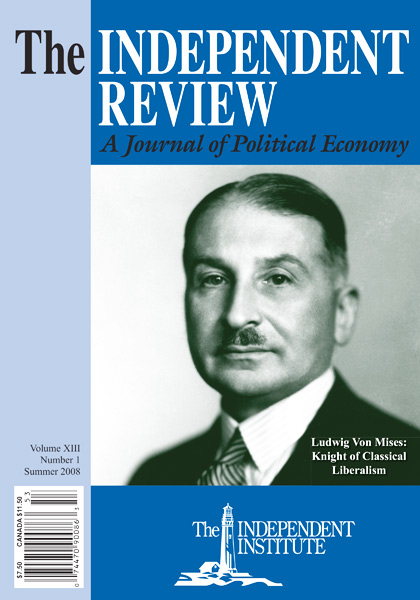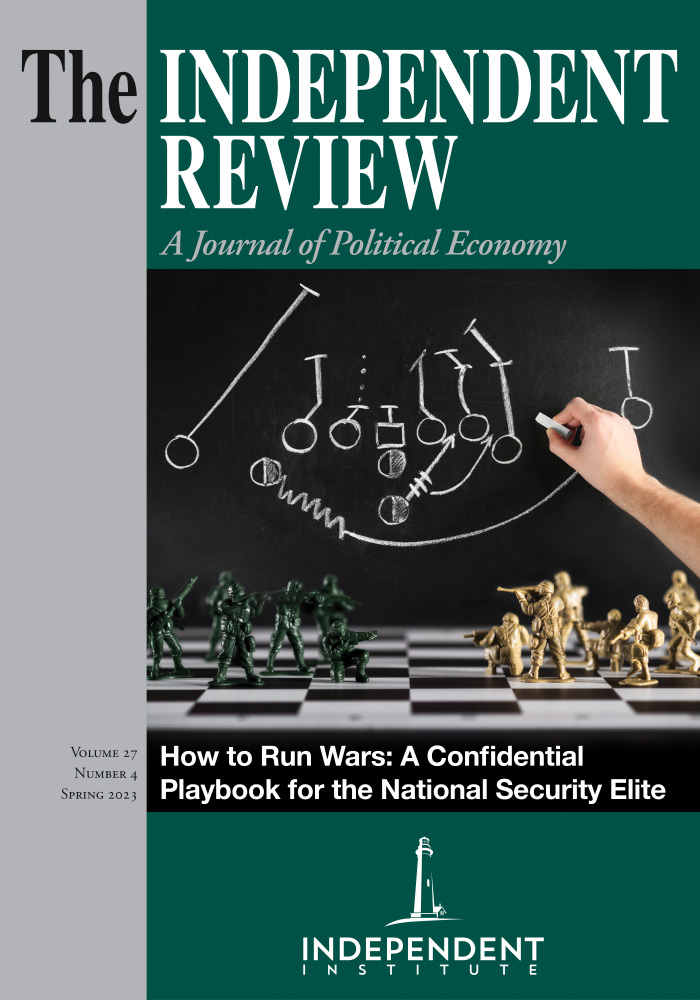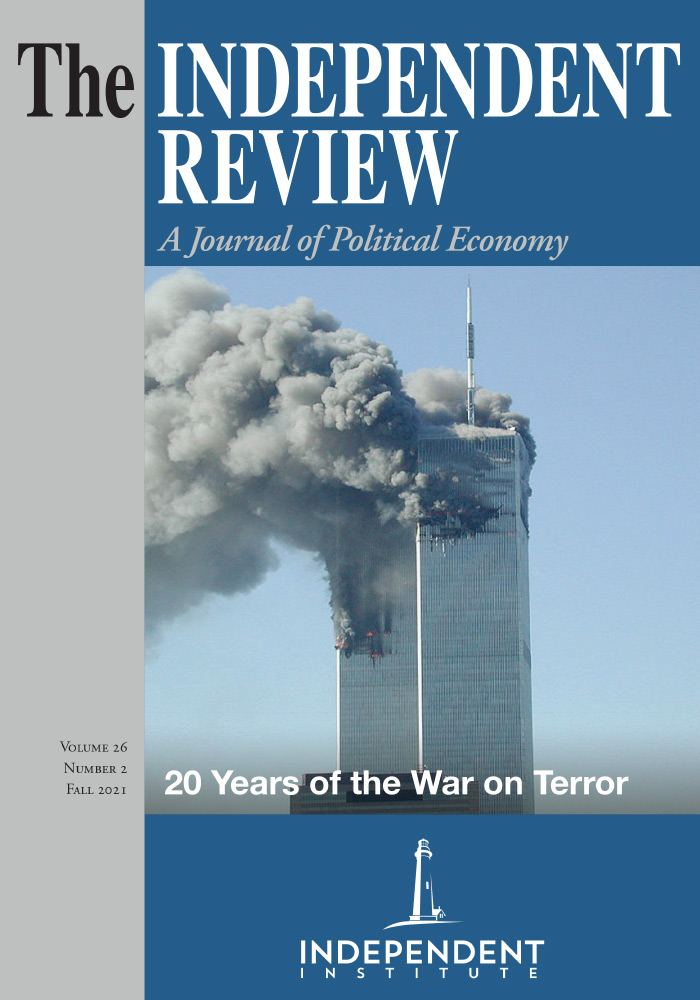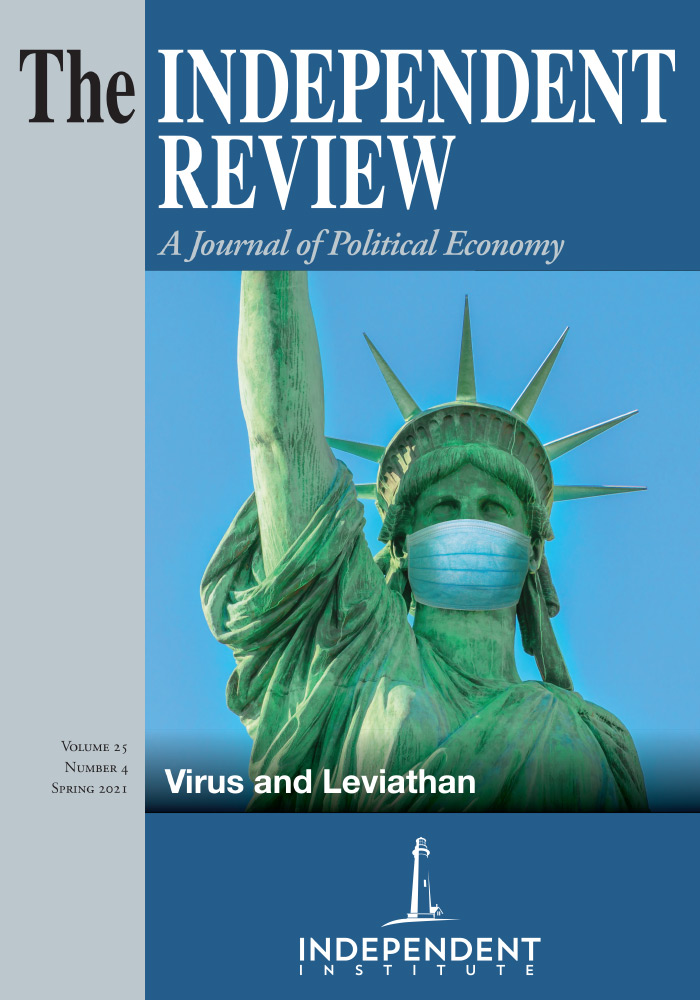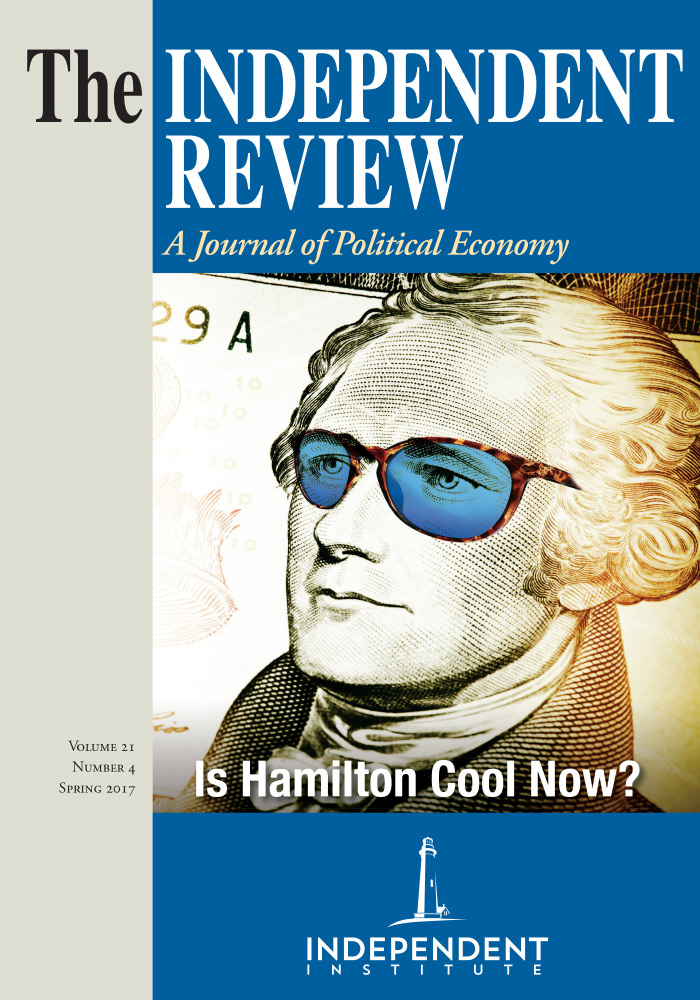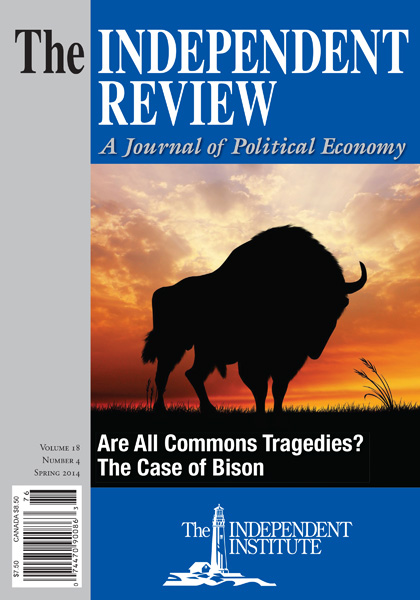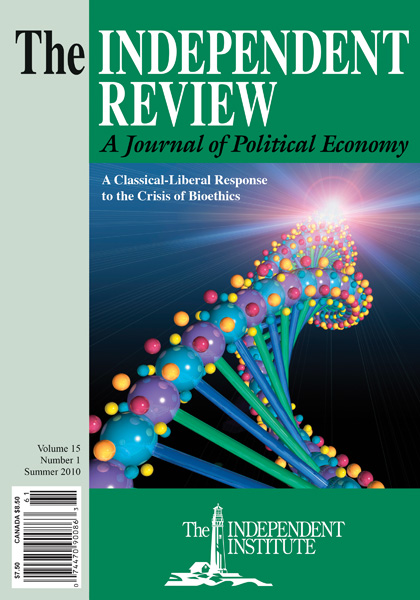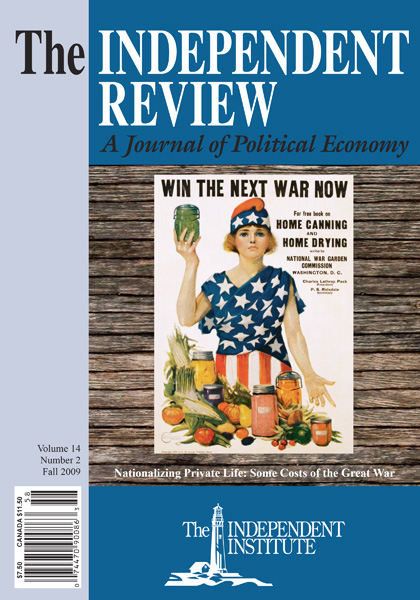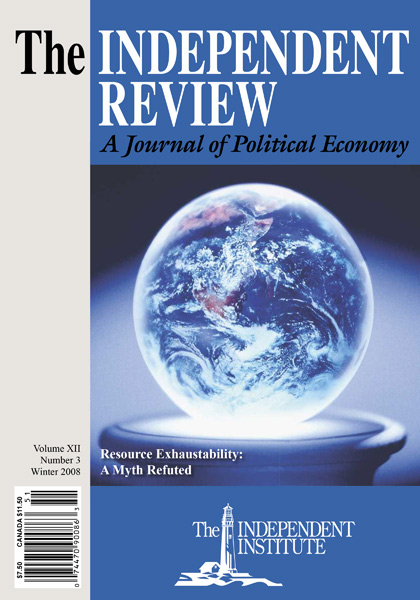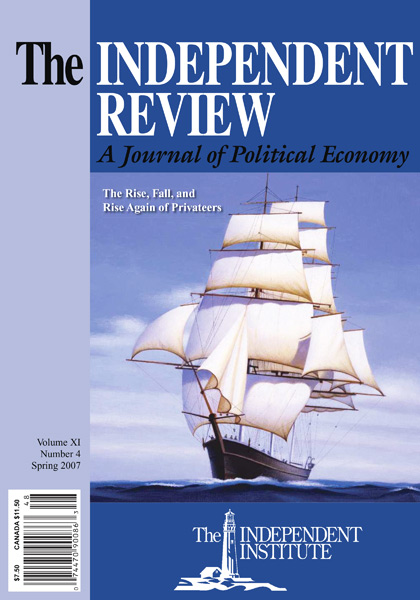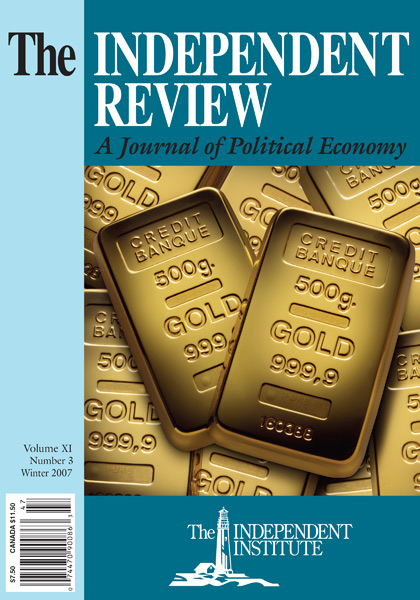Austrian economist Ludwig von Mises (1881–1973) produced path-breaking critiques of socialism, central banking, and methodological malpractice in the social sciences, yet the details of his intellectual development had remained a mystery. Fortunately, in the monumental biography Mises: The Last Knight of Liberalism (2007), Jörg Guido Hülsmann reveals many of these details, illuminating the remarkable life and works of a man who deserves wider recognition for reviving classical liberalism and putting it on a more consistent footing.
Article
Ludwig von Mises (1881–1973) was one of the most important economists of the twentieth century. Even if he had made no other contribution over a professional lifetime that spanned seven decades, his place in the history of economic ideas would be assured by his devastating analysis of why socialist central planning is inherently “impossible.” Besides this achievement, however, he also formulated a monetary theory of the business cycle that at one point in the 1930s rivaled even the emerging Keynesian Revolution for attention.
In addition, Mises was a leading contributor to the philosophy of the social sciences, building on the legacy of the classical economists, the early Austrian school, Max Weber’s sociology of meaningful action, and the “intentionalist” tradition in continental philosophy. His major economic treatise Human Action ([1949] 1996a) is a work in the grand style of eighteenth-century Enlightenment thinkers. It lays before the reader not only a thorough analysis of the logic of human decision making and the market process, but also a theory of society and the social order with all of its philosophical, sociological, economic, and political dimensions. Though “Renaissance man” is a much misused and abused appellation, it may rightly be said that the breadth and depth of Mises’s writings marked him truly as such a man even in an age of growing scientific specialization.
Finally, through his writings, teaching, and personal contacts, Mises cultivated new generations of both Austrian economists and classical liberals, beginning in the 1920s and 1930s. Indeed, if not for Mises’s influence on a significant number of European and American scholars, writers, and even policymakers, the vision and the ideal of the liberal free-market order might have been lost in the dark decades of totalitarian collectivism and the rise of the interventionist welfare state. It is doubtful that a vibrant and growing Austrian school of economics would now exist if not for Mises’s relocation to the United States, where he made a great personal and literary impact on a number of American scholars during the years of Keynesian domination in the 1950s and 1960s.
Although a number of his former students have pointed out that Mises was neither a great orator nor an especially dynamic speaker in the classroom, he fostered a deep devotion and following among groups of people beyond professional economists. Long before he came to the United States during World War II, this effect often irritated his critics, who sometimes referred rudely to a “cult” that had formed around him.[1]
In spite of this major influence on “Austrian” and classical-liberal thought, very few studies have been devoted to Mises’s life and contributions, and, until recently, no detailed intellectual biography of the man and his ideas existed.[2] This scant attention stands in contrast to that devoted to the other twentieth-century giant of the Austrian school and classical liberalism, Friedrich A. Hayek (1899–1992). Indeed, in the decades that have followed Hayek’s receiving the Nobel Prize in 1974, an intellectual “cottage industry” has grown up as writers across the political spectrum have devoted themselves to analyzing his ideas. Yet more than once Hayek pointed out that virtually all of his own contributions to monetary and business-cycle theory, his critique of socialism and planning, his analysis of competition and the market process, and his critical studies of scientism, positivism, and historicism were all deeply influenced, if not directly inspired, by Mises’s earlier writings in every one of these areas of research.
The lack of an intellectual biography of Mises has reflected in part the paucity of knowledge about Mises the man. He was an extremely private individual who shared little about his personal life. His memoir Notes and Recollections ([1940] 1978), which was written in the autumn of 1940, shortly after he arrived in the United States, and not published until 1978, tells very little about his intellectual development or his family history. It is very far from what is normally considered an autobiography. He did not keep a diary, and his letters to people were more often short essays on political and economic affairs than correspondence in which he shared with others the circumstances of his life. His wife, Margit, wrote her own recollection, My Years with Ludwig von Mises ([1976] 1984) not long after he passed away, but it does little to fill the gap.
Much of the material on which a full biography might have been based appeared to have been lost during World War II. Shortly after the Nazi annexation of Austria in March 1938, the Gestapo went to what had been Mises’s apartment in Vienna and seized all of his papers, documents, manuscripts, correspondence, and other materials relating to his family and personal life. Mises later believed that all of these materials had been destroyed during the war. By a strange twist of fate, however, they actually survived the war and ended up in a secret Soviet archive in Moscow, where they remained unknown to anyone in the West until the 1990s. Copies of these “lost papers” now reside in several locations in the United States.[3]
These papers serve as a critical source for the story that Jörg Guido Hülsmann tells in his recent biography Mises: The Last Knight of Liberalism (2007). In a text of more than one thousand printed pages, Hülsmann traverses the entire span of Mises’s life, from the twilight years of the old Austro-Hungarian Empire in the late nineteenth century, to the traumas and events of the two world wars, and then to Mises’s “second life” in the United States from 1940 until his death in 1973.
A monumental effort has clearly gone into this study. At every stage, Hülsmann tries to explain, often in great detail, the historical milieu in which Mises was working and writing during each phase of his life. The author’s fluency in all of the relevant languages has assured that practically everything that occurred in Mises’s life has been incorporated into the narrative. Almost eight hundred of the one thousand pages focus on his years in Europe, and most readers probably will find this part of the story to be the most fascinating.
Those who are familiar with Mises through his voluminous writings may think of him most often as the grand “armchair theorist,” as the great analytical “systems builder” who explained capitalism and contrasted it with socialism and the interventionist state and who expounded on sound money versus inflationary paper currency, or as the social philosopher who argued for the “apodictic certainty” of the “a priori” axioms of the science of human action. During most of his adult years before World War II, however, Mises made his living as a fact-focused, senior policy analyst for the Vienna Chamber of Commerce. His job was to analyze existing and proposed legislation critically and to influence Austrian economic policy in a more pro-business, market-oriented direction. Mises was thus a meticulous “policy wonk” during the workday and a social and economic theorist by night, when he wrote the articles and books that earned him an international reputation as one of the leading European economists of his time.
He also maintained a relatively high profile in the news media during the interwar years in Vienna. He wrote frequently for the liberal press on the issues of the day, and news articles often mentioned public lectures he gave or his participation at professional or governmental conferences both at home and abroad.
In the interwar period, when Austrian politics and economic policy leaned in a socialist and interventionist direction, Mises sometimes succeeded in reversing or at least limiting the full impact of the collectivist policies the country was implementing. For example, he was clearly a significant influence in bringing to an end the Great Austrian Inflation of the early 1920s. He also participated in writing the by-laws that guided the reconstructed Austrian National Bank after the inflation and that put the country back on a gold standard.
Most of his activities in Austria during the interwar era occurred behind the scenes, however. He is virtually never mentioned in histories of Austrian politics or economic policy during the 1920s and 1930s. Only by using the documents in his “lost papers” and some of the archival material in the Vienna Chamber of Commerce can scholars discover the full extent of Mises’s important involvement in his country’s affairs.
His other influence on the Austrian intellectual scene operated through his teaching at the University of Vienna and his famous “private seminar.” Although he was only a privatdozent (unsalaried lecturer) at the university, he influenced a new generation of young Austrian economists and visiting students studying in Vienna during the interwar years. Hülsmann gives too little attention to his university activities. The papers recovered from Moscow contain all of the syllabi from his classes, the attendance lists for each term, and student summaries of some of his lectures. They enable us to determine which future notable economists—Austrian and foreign—attended his courses, what he said in at least some of the lectures, and the style in which he presented his ideas.
Also not given the attention that it might well have received is Mises’s role in the Austrian Institute for Business Cycle Research and its activities. Established under Mises’s guiding hand in 1927, with a young F. A. Hayek as its first director, the institute soon gained a wide reputation for the quality and insightfulness of its analysis of economic trends in Austria and in central Europe in general. Its archives in Vienna contain all of the documents, program and publication materials, and summaries of the board of directors meetings, which permit us to understand in far greater detail than Hülsmann presents the institute’s activities during the years when Mises was involved.
However, Hülsmann does outline the details of Mises’s family background to a greater extent than previous writers have. Mises came from a prominent Jewish merchant family in the eastern region of Galicia. Family members were actively involved in the political and religious movements of the first half of the nineteenth century that were awakening the Orthodox Jewish community from its theological and cultural slumber in this part of the Austro-Hungarian Empire. A few months before Ludwig’s birth, in September 1881, his great-grandfather was ennobled by the Austrian emperor Franz Joseph for his services as a leader of the Jewish community in Lemburg (the Galician capital), and this ennoblement bestowed the title von on the family. Hülsmann explains the intellectual and cultural environment in which Mises, as an Austrian Jew, attended high school and the University of Vienna in the last decade of the nineteenth century and the first decade of the twentieth century.
He also gives a good feel for the six years during which Mises taught at the Graduate Institute of International Studies in Geneva, Switzerland, after leaving Vienna in 1934 and before departing for the United States in the summer of 1940. The Graduate Institute, under the directorship of William E. Rappard, served as an intellectual oasis for classical liberals in the heart of a Europe increasingly being darkened by the rise of fascist, Nazi, and Soviet totalitarianism.
Many readers may be surprised to learn the extent to which the Graduate Institute and then Mises himself in the years immediately after he came to United States were kept afloat financially through generous grants from the Rockefeller Foundation. In fact, for the first years of Mises’s life in the United States, before his appointment as a visiting professor in the Graduate School of Business Administration at New York University (NYU) in 1945, he was almost totally dependent on annual research grants from the Rockefeller Foundation. Even after he finally landed the position at NYU, where he remained only a visiting professor until his retirement in 1969, his salary was paid for not by NYU, but from funds contributed by generous private supporters.
Hülsmann weaves his tale with expositions and interpretations of Mises’s writings during his years in both Europe and the United States. He has carefully read and digested the huge corpus of Mises’s work, yet he offers the reader a particular interpretation of Mises’s contributions, one with which some scholars will disagree. Members of the Austrian school have never held a uniform or unified conception of method or theory. Views diverged among the school’s founding members—Carl Menger, Eugen von Böhm-Bawerk, and Friedrich von Wieser—before World War I and again among the school’s leading members in the years between the world wars. As Alan Sweezy remarked in the early 1930s, “In spite of a common tradition and far-reaching agreement on many points, the present group harbors deep-rooted differences of opinion in its midst” (1933–34, 176). Similar differences in emphasis and approach exist among the current generation of Austrian economists.
Hülsmann is basically correct that the central theme around which most of Mises’s ideas came to revolve was his conception of “economic calculation,” which stemmed from his critique of socialist central planning. The early proponents of marginal utility theory took for granted that “utility” represented a measurable magnitude of satisfaction derived from the consumption of desired goods. This view was held by most of the early Austrians, including Böhm-Bawerk and Wieser, who differed over the question of how to determine the “total utility” received from the consumption of various quantities of goods. Was it necessary to add up the marginal utility received from each unit of a good consumed (Böhm-Bawerk) or to multiply the marginal utility of the last unit consumed by the total number of units consumed (Wieser)?
In 1907, Franz Cuhel, a Czech proponent of the Austrian approach, published a book in which he argued that “utility” cannot be measured. Utility, he maintained, is an “intensive” magnitude experienced within the human mind and is subject only to ordinal comparisons in which the actor finds one good to be preferable to another, but cannot assign a definite amount of satisfaction to his consumption of the preferred good.
Given that value is not something inherent in a good (related, according to many of the classical economists, to the quantity of labor required to produce that good) and because utility cannot be measured to determine the sum of “value” received from consumption of various quantities and combinations of goods (as some of the early marginalist economists seemed to believe), how can we know whether the factors of production in a complex economy are being applied rationally to serve the ends that consumers value?
The answer is that there is no method to determine this knowledge unless we can find a common denominator through which physically heterogeneous goods and resources may indirectly express or reflect the value that factors of production might have in their possible alternative uses for the production of desired consumer goods. In other words, we have no way to impute or assign to the factors of production a value that reflects the value of the goods that these factors can be used to produce.
The indirect method, Mises explained, is the price system of a market economy based on private ownership of the means of production. The money prices of the market do not measure the value people place on desired goods (that valuation remains only an ordinal ranking of “A is preferred to B”). Yet those prices can serve as a quantifiable common denominator for evaluating what the consumers’ value more or less highly and for measuring the opportunity costs of employing the resources in alternative uses, which are revealed by the bids that competing entrepreneurs make for their employment in producing different desired goods.
Because under a comprehensive system of socialist central planning, competitive market-based bids and offers for factors of production are no longer possible (because private ownership and market transactions have been abolished), the central planners lack the institutional tool essential for any system of rational economic calculation: a price system expressed through a common medium of exchange—money. Thus, socialism as a rational economic system is “impossible,” if by possible we mean capable of using existing resources in a manner that approximates the ability of a functioning free-market economy to satisfy consumers.
As Hülsmann notes, the precise formulation of this argument and all of its implications were not presented or understood by Mises at the time he began to write on this theme in 1919–20. Mises refined and developed various aspects of the argument over many years, finally giving it a finished form in his 1940 treatise Nationalokonomie ([1940] 1980), which was the German-language forerunner of Human Action, published nine years later.
Nonetheless, the finished form of Mises’s argument, as understood by Hülsmann, becomes the Archimedean point from which Hülsmann proceeds to evaluate other Austrian economists who preceded or were contemporaneous with Mises. If only Wieser had not accepted that utility was measurable and had not formulated an Austrian version of general equilibrium theory, and if only Hayek had not adopted this Wieserian tradition and argued against central planning on the basis of imperfect and decentralized knowledge instead of on the basis of the Cuhel-Mises theory of ordinal utility, socialism might have been defeated before World War II and the Keynesian Revolution might have been suffocated in its cradle. All the problems of the first half of the twentieth century sprang from the failure of other members of the Austrian school to follow the true Misesian message, Hülsmann laments, even though Mises did not state his argument fully until the 1940s!
Of course, nowhere in the book does Hülsmann state this interpretation in such stark fashion, but as the reader proceeds through the volume and digests his critique of other Austrians, this conclusion is not easy to avoid. That Hayek’s own critique of socialism is not a simple carbon copy of Mises’s is certainly true, but that fact does not mean that Hayek’s critique is incompatible with Mises’s argument or somehow less persuasive. Indeed, it may well be argued that in the twentieth-century battle of ideas, however profound and fundamentally correct Mises’s argument may be (and I myself believe in its profundity and correctness), Hayek’s critique of the problems that arise from the inherent imperfection and decentralized nature of human knowledge in the social division of labor has been more persuasive in demonstrating why central planning is inherently unworkable.
Alas, it is precisely because so many have come to see the cogency of Hayek’s argument that his version of the case against socialism has received far more attention than the equally if not more cogent reasoning of Mises’s critique. In fact, Hayek’s article “The Use of Knowledge in Society” ([1945] 1948) has been far more influential in defeating the advocates of socialism in the arena of international intellectual opinion than Mises’s article “Economic Calculation in the Socialist Commonwealth” ([1920] 1935). Whether this difference in impact is unfortunate or unfair, it has nevertheless been the case.
Mises himself regarded Hayek’s “knowledge” argument as a “valuable contribution” to our understanding of socialism. In stenographic notes from Mises’s NYU seminar on March 20, 1958, Bettina Bien Greaves (who for many years took down Mises’s lectures and comments in the seminar word for word) quotes Mises as saying:
The fact that knowledge exists dispersed, incomplete and inconsistent, in many individual minds, has been pointed out by Hayek and this is very important. Hayek says that if we are talking about the knowledge of our age, we are making a mistake if we think that this knowledge exists in all minds, or even that all of it exists in the mind of one man. He pointed out, for instance, in the case of the socialistic society that the progress possible is limited by the mind of one man. It is important for the capitalist economy that everybody, who has a better knowledge about some particular problem, can try to profit from this superiority and his attempts contribute to the improvement of the general conditions. In the socialistic economy, knowledge has value only insofar as it is available to the central authority, to the dictators who are making the central plan. Under capitalism, the coordination of the various bits of knowledge is brought about through the market. In a socialistic society it must be effected either in the mind of the dictator or in the minds of the members of the dictator’s committee.
Mises had alluded decades earlier to the significance of the division of knowledge in society. Already in Socialism he had stated: “In societies based on the division of labor, the distribution of property rights effects a kind of mental division of labor, without which neither economy nor systematic production would be possible” ([1922] 1981, 101). And a few years later, in Liberalism, he pointed out that a fundamental shortcoming of socialist central planning as a viable alternative to the market economy is that “[i]t must forgo the intellectual division of labor that consists in the cooperation of all entrepreneurs, landowners, and workers as producers and consumers in the formation of market prices. But without [that division of labor], rationality, i.e., the possibility of economic calculation, is unthinkable” ([1927] 1996b, 75).
The context in which Mises made these statements is not the same as it was for argument that Hayek made in later years, but the statements do show that each man perceived a form of a “knowledge problem” in society. Mises emphasized an intellectual division of knowledge in a private-property order that enables the formation of market prices for purposes of economic calculation, without which a rational use of the society’s means of production is “impossible.” Hayek emphasized an inescapable division of knowledge in society that the resulting market-generated price system can successfully coordinate in a way that would be “impossible” under central direction. These claims are aspects of the same theme—why central planning is inherently unworkable. The two arguments complement rather than contradict each other.
The other major theme in Hülsmann’s interpretation is Mises’s place in the classical-liberal movement. He demonstrates that Mises held a far more consistent and carefully thought-out conception of the free society than most other free-market liberals in the twentieth century. The refreshing clarity and coherence of Mises’s liberal vision are difficult to find in any other thinker of the same period. As a result, he truly stood alone, not only in a climate dominated by collectivists of various stripes, but among other free-market advocates as well.
In Hülsmann’s presentation of Mises’s ideas, however, the less-consistent laissez- faire positions of these other liberals are portrayed as if these individuals were mostly knaves or cowards, sellouts to mild socialism, all of whom should have known and really did know better. Some of them, no doubt, fit this description. At an Austrian economics conference in 1975, when several of us were having dinner with Hayek one evening, I asked him why he thought Lord (Lionel) Robbins, who had been such a staunch advocate of Austrian economics and the free market at the London School of Economics in the 1930s, had shifted to a much more compromising Keynesian position after World War II. Hayek thought a moment and said, “Robbins is one of my oldest friends, and I love him dearly, but he preferred to be Lord than right.”
Whether this devastating statement about Robbins is true or not, the pressures on free marketeers after 1945 to accommodate themselves to the Keynesian domination of the economics profession were very, very strong. Besides, in the past two hundred years very few classical liberals have been as thorough in their free-market views as Mises. He was an intellectual outlier by the standards of both the nineteenth and the twentieth centuries. Few free-market economists have called for the abolition of central banking or the repeal of public education or child-labor laws (most nineteenth- century liberals advocated government schooling, and they were divided over workplace regulations). Nor have market-friendly economists been against all forms of government safety nets or the regulation of business. Mises may very well have been right about these issues (and, again, I happen to think he was), but the liberal tradition in Europe and the United States has been far less laissez-faire than the version he defended.
In his desire to spotlight Mises as the “last knight of liberalism,” Hülsmann is too dismissive of these other branches of the modern classical-liberal tradition and their complementary contributions in resisting socialism and interventionism. However, when he turns to a discussion of Mises’s activities and place in the U.S. freedom movement after 1945, he sometimes presents him as an old stick-in-the-mud who resisted the more radical libertarian defense of “anarchocapitalism.” In this part of the book, Mises’s knightly armor suddenly becomes tarnished and seemingly out of date. If only he had been lucky enough to have read Murray Rothbard’s For a New Liberty ([1971] 1978) and The Ethics of Liberty (1982) decades before they were published! Poor Mises was simply born too soon. In spite of the commendable task that Hülsmann has performed in completing this significant work, he perhaps approached his task with too many axes to grind—and I say so as someone who is in great sympathy with much of the interpretative framework he employs in the volume.
Finally, one other observation may be in order. Throughout the book Hülsmann refers to and draws on a large amount of literature in a variety of languages, but he seems to have had a peculiar reluctance to let the reader know that there are Englishlanguage versions of many of the books and articles he quotes from or paraphrases, including books and articles by Mises. This omission restricts the English-speaking reader’s ability to pursue certain topics or themes that might be of particular interest to him. The English versions of these works should at least have been listed in the extensive bibliography at the end of the book.
Notwithstanding the criticisms I have offered, Hülsmann has given us a valuable entrée into the life, times, and contributions of one of the greatest thinkers of the past one hundred years.
Notes
1. According to Paul Einzig, “With [T. E.] Gregory and [Lionel] Robbins, he [Hayek] has constituted a trio [at the London School of Economics]. . . . Between them they set up a cult of the Austrian economist, Professor Ludwig von Mises, with his fanatic belief in cutting down prices, and especially wages, as a remedy for all evil [in the Great Depression]” (1937, 204).
2. Those few works include Edwards 1985; Butler 1988; Rothbard 1988; Kirzner 2001; and Pallas 2005.
3. In October 1996, my wife, Anna, and I were the first Western scholars to gain access to these “lost papers” at the Center for Historical and Documental Collections, a formerly secret archive in Moscow, Russia. We were able to obtain photocopies of virtually the entire collection, eight thousand pages of material, which we brought back to the United States. The story of the discovery and retrieval of these papers may be found in the following articles: Ebeling 1997a, 1997b, 1997c, 2004a, 2004b.
References
Butler, Eamonn. 1988. Ludwig von Mises: Fountainhead of the Modern Microeconomics Revolution. Brookfield, Vt.: Gower.
Ebeling, Richard M. 1997a. The Discovery of the “Lost Papers” of Ludwig von Mises. Laissezfaire, Revista la Facultad de Ciencias Economicas, No 6 (Universidad Francisco Marroquín, Guatemala) (March 1997): 50–53.
———. 1997b. The Discovery of the Lost Papers of Ludwig von Mises. Report. Fairfax, Va.: Future of Freedom Foundation, March.
———. 1997c. Mission to Moscow: The Lost Papers of Ludwig von Mises. Liberty magazine (May 1997): 43–46.
———. 2004a. De Viena a Moscou—os escritos perdidos de Ludwig von Mises (From Vienna to Moscow: The “Lost Papers of Ludwig von Mises”) (in Portuguese). Available at: http://www.midiasemmascara.com.br/artigo.php?sid2095.
———. 2004b. Mission to Moscow: The Mystery of the “Lost Papers” of Ludwig von Mises. Notes from FEE (July 2004). Available at: http://www.fee.org/pdf/notes/NFF_0704.pdf.
Edwards, James Rolph. 1985. The Economist of the Country: Ludwig von Mises in the History of Monetary Thought. New York: Carlton Press.
Einzig, Paul. 1937. World Finance, 1935–1937. New York: Macmillan, 1937.
Hayek, Friedrich A. [1945] 1948. The Use of Knowledge in Society. In Individualism and Economic Order, 77–91. Chicago: University of Chicago Press.
Hülsmann, Jörg Guido. 2007. Mises: The Last Knight of Liberalism. Auburn, Ala.: Ludwig von Mises Institute.
Kirzner, Israel M. 2001. Ludwig von Mises. Wilmington, Del.: ISI Books.
Mises, Ludwig von. [1920] 1935. Economic Calculation in the Socialist Commonwealth. In Collectivist Economic Planning: Critical Studies on the Possibilities of Socialism, edited by Friedrich A. Hayek, 87–130. London: George Rutledge.
———. [1940] 1978. Notes and Recollections. South Holland, Ill: Libertarian Press.
———. [1940] 1980. Nationalokonomie: Theorie des Handelns und Wirtschaftens. Munich: Philosophia Verlag.
———. [1922] 1981. Socialism. 3rd rev. ed. Indianapolis: Liberty Classics.
———. [1949] 1996a. Human Action: A Treatise on Economics. 4th ed. Irvington-on-Hudson, N.Y.: Foundation for Economic Education.
———.[1927] 1996b. Liberalism. Irvington-on-Hudson, N.Y.: Foundation for Economic Education.
Mises, Margit von. [1976] 1984. My Years with Ludwig von Mises. 2d enlarged ed. Cedar Falls, Iowa: Center for Futures Education.
Pallas, Carsten. 2005. Ludwig von Mises als Pioneers der modernen Geld- und Konjunkturlerhe. Marburg, Germany: Metropolis Verlag.
Rothbard, Murray N. [1971] 1978. For a New Liberty: The Libertarian Manifesto. 2d rev. ed. New York: Collier Macmillan
———. 1982. The Ethics of Liberty. Atlantic Highlands, N.J.: Humanities Press, 1982.
———. 1988. Ludwig von Mises: Scholar, Creator, Hero. Auburn, Ala.: Ludwig von Mises Institute, 1988.
Sweezy, Alan R. 1933–34. The Interpretation of Subjectivist Value Theory in the Writings of the Austrian Economists. Review of Economic Studies 1: 176–85.

